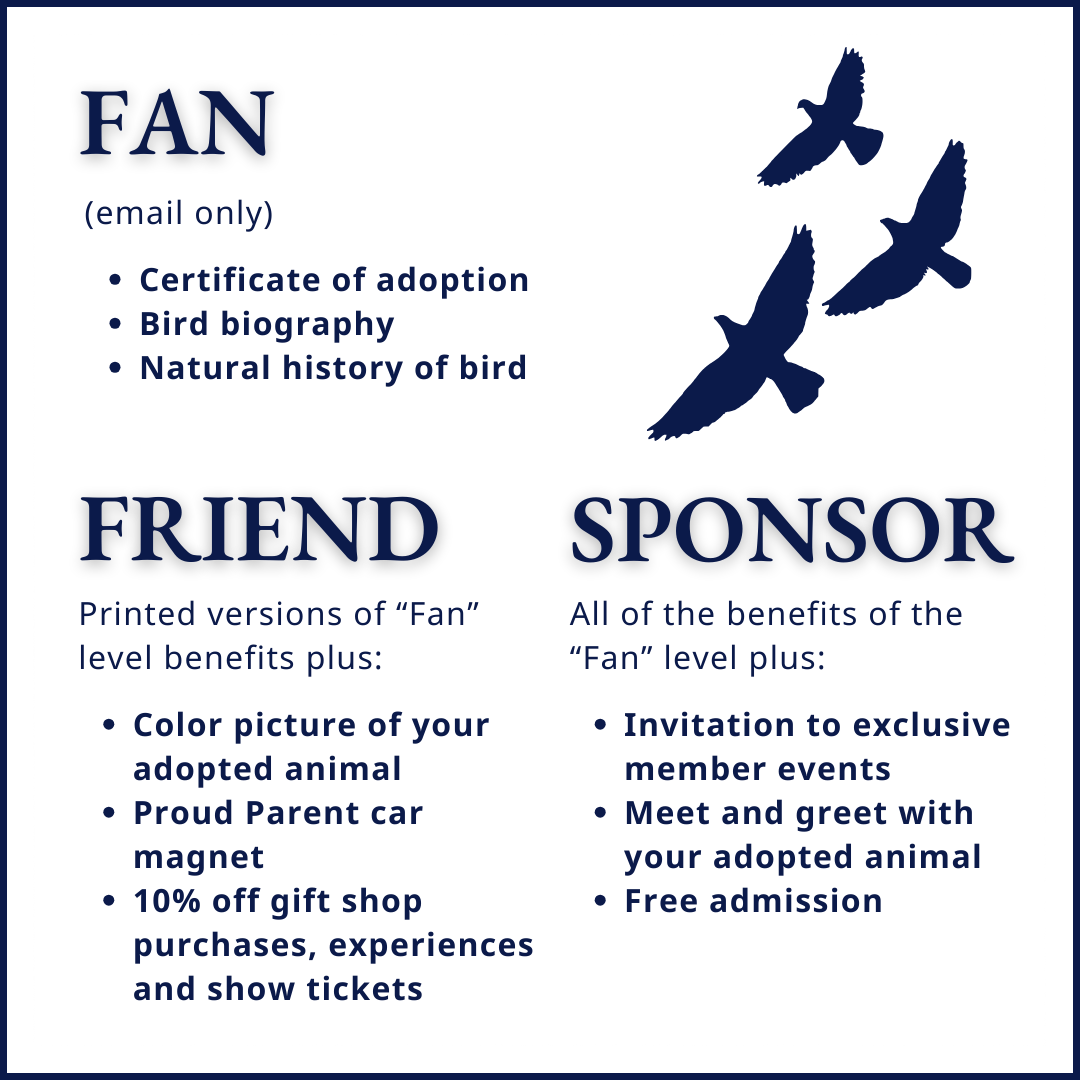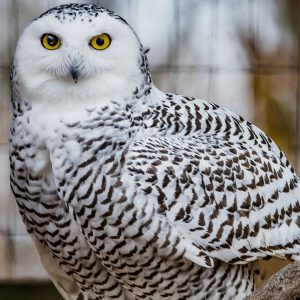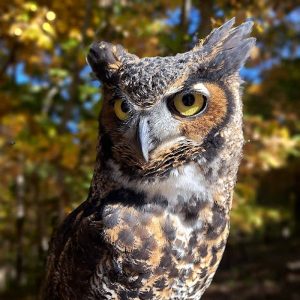Bald Eagle – Lewis
Lewis was wild hatched in Washington state. At a very young age he fell out of his nest on two separate occasions, badly injuring his hip and leg on the second fall. He was brought in to a rehabilitation center, where he received intensive treatment for his injuries over an extended period of time. Even though he survived his injuries, he did not regain full use of his foot and would not have been able to survive in the wild. Once Lewis was deemed non-releasable, he was sent to World Bird Sanctuary. We quickly found out he was comfortable around humans, and very curious. Lewis began training early to join our Eagle Flight Team where he quickly excelled.
$29.00 – $129.00
Description
HATCH YEAR: 2002
FUN FACTS ABOUT LEWIS
- Lewis was a rock star flyer for years at opening day for the Cardinals at Busch Stadium. He is happily retired from flying now due to his age.
- Aside from performing at countless other large events Lewis has also traveled with our Zoo Show teams off and on over the years, being an amazing ambassador for his species.
- One of the easiest ways for our naturalists to distinguish Lewis from our other bald eagles is his beautiful “racing stripes,” the light brown feathers by his eyes.
SPECIES FACTS
Scientific Name:
- Haliaeetus leucocephalus. Latin and Greek origin meaning “white-headed sea eagle.”
Distribution:
- Canada and United States.
Habitat:
- Typically nest in forested areas adjacent to large bodies of water, staying away from heavily developed areas when possible.
- During winter migration, they congregate near open water in tall trees for spotting prey and night roosts for sheltering.
Diet:
- Fish (common examples include salmon, herring, shad, and catfish), but these birds eat a wide variety of foods depending on what’s available like carrion, waterfowl and mammals.
- Bald Eagles frequently harass birds including Ospreys and other eagles to steal their food. Have also been known to pirate fish from fishing vessels.
Behavior:
- Sometimes found in large numbers during winter feeding.
- Nesting time is during February. One to three eggs will be laid per year.
- Bald Eagles are powerful fliers—soaring, gliding, and flapping over long distances. They have been recorded flying at 35-43 mph.
- Build some of the largest bird nests — typically 5 to 6 feet in diameter and 2 to 4 feet tall and can take up to 3 months to build. They typically use the same nest year after year, building onto and repairing it as needed. The largest nest ever recorded was in Florida and was 20 feet deep and 9.5 feet across. It weighed 2.7 metric tons!
Identification:
- The term “bald” originated from the old English word “balde” meaningwhite. However, Bald Eagles do not have a fully white head and tail until 4 to 5 years old.
- Their body feathers are brown and feet and bill are bright yellow.
Additional information
| Adoption Level | Fan, Friend, Sponsor |
|---|





